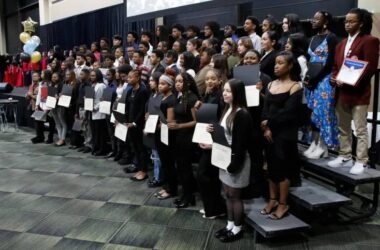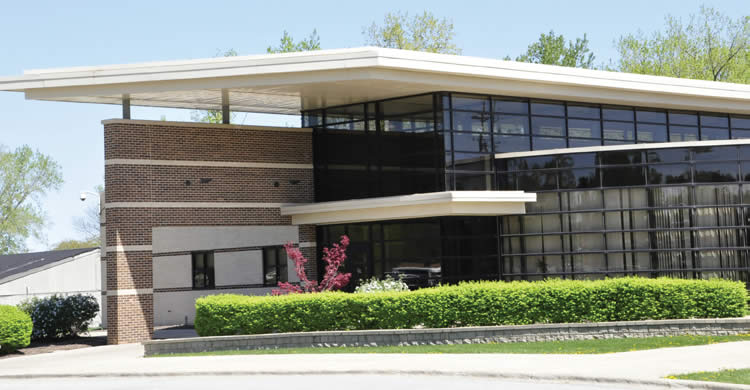
More than 60 Percent of CPS Students Outscore National Peers in Reading
CHICAGO–(ENEWSPF)–August 10, 2017. Mayor Emanuel, CPS CEO Forrest Claypool and CPS Chief Education Officer Dr. Janice K. Jackson today announced that more Chicago elementary students than ever before are meeting or exceeding standards for math and reading. For the fifth year in a row, CPS students have outscored national peers in both subjects.
A record 61.4 percent of students met or exceeded the national testing average in reading and 55.9 percent of students met or exceeded the average in math on the 2016-17 Northwest Evaluation Association Measures of Academic Progress (NWEA MAP) exam. NWEA MAP measured the academic achievement of more than 8 million students in grades 2 through 8 at more than 7,800 schools and districts across the country.
“For the fifth year in a row, CPS students are meeting or beating the national average in both reading and math,” said Mayor Emanuel. “Record setting achievements like NWEA results are proof that when we raise the bar for Chicago’s students, they take pride in meeting and beating our expectations.”
The percentage of CPS students meeting and exceeding the national average has increased by 34.6 percent in reading and 23.9 percent in math since 2013. With consistent gains over the past five years, CPS students are scoring higher in reading and math than their national peers.
“Again, independent national data shows that Chicago students are learning and achieving at record breaking levels,” said CPS Chief Executive Officer Claypool. “By investing in schools and the resources our students need to be successful, CPS is working to put all of Chicago’s students on a path to success.”
CPS students also continue to exceed national growth averages in reading and math. In 2017, 60.4 percent of students met or exceeded national averages for reading growth, and 56.7 percent of students met or exceeded averages for math growth. Any rate above 50 percent exceeds the national average for growth and signifies the substantial progress CPS students continue to make.
“Chicago students have outscored their national peers for five years in a row, and we’re building on that momentum to make sure we are preparing every CPS student for success, “said CPS Chief Education Officer Jackson. “Chicago students are breaking down barriers, changing mindsets and redefining what low income and students of color can accomplish when given the opportunity and support to succeed.”
At several CPS schools, more than 95 percent of students met or exceeded national averages in both reading and math. These schools included Lane Technical College Prep High School, Whitney M. Young Magnet High School, Annie Keller Regional Gifted Center, Skinner North Classical School, Decatur Classical Elementary School, James E. McDade Classical School, William Howard Taft High School, Kenwood Academy High School and Edison Regional Gifted Center.
The NWEA results are only the latest example in several independently confirmed data points that show the tremendous improvements and remarkable achievements they are making. Most recently, a study from the University of Illinois – Chicago’s Center for Urban Education Leadership showed that Chicago students outperform their Illinois peers in every major racial and socioeconomic group.
This study came on the heels of research from Stanford University’s Sean Reardon, who found that Chicago students improve academically faster than any large urban school system in the country.
Since 2011, CPS students continue to make historic gains across a wide range of significant milestones such as “the Nation’s Report Card.” According to NAEP, CPS students were among the national leaders in gains for both eighth grade math and fourth grade reading on the national benchmark assessment in 2015. Eighth grade CPS students achieved the greatest growth in the nation among their urban peers in math, registering growth of 6 scale-score points since 2013. Fourth graders achieved the third highest growth in the nation among their urban peers in reading with growth of 7 scale-score points since 2013. Chicago was one of only three urban districts – joining Cleveland and Miami-Dade – to have experienced academic growth in math and reading in both the fourth and eighth grades in 2015.
Students have achieved historic gains in freshmen-on-track to graduate rates, as well as graduating high school and enrolling in college in record numbers. The CPS graduation rate has climbed by more than 16 points since 2011 to 73.5 percent in 2016, and is growing more than three times faster than the national rate in the same time frame. In the same time frame, ACT scores have increased by 1.2 points across all district schools. Graduation rates have been driven in part by the district’s focus on its freshman on track to graduate rate, which was 87.4% in 2016 and up from 69% in 2011.
Mayor Emanuel and CPS continue to support student advancements by making significant investments to improve education. The transition in 2012 to the full school day and full school year ensured that students in all schools receive high levels of math and literacy instruction. CPS is also in the process of developing curriculum and sequencing for schools to adopt, expanding academic enrichment opportunities, like chess and debate, providing professional development opportunities and leveraging university partnerships to continue to implement evidence-based policies to put our students on the path to success.
Chicago Public Schools serves 381,000 students in 652 schools. It is the nation’s third-largest school district.
Source: http://cityofchicago.org








